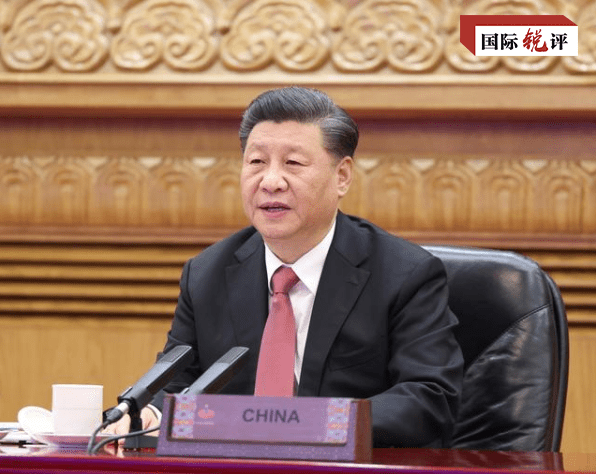“Building the Asia-Pacific Community Together” – On the 20th, the 27th informal meeting of leaders of the Asia-Pacific Economic Cooperation (APEC) held by video reached this goal, pointing out the direction of Asia-Pacific economic cooperation in the next 20 years.
“We should take this as a new starting point and start a new stage of Asia-Pacific cooperation.” In his speech at the summit on the same day, Xi Jinping, China’s supreme leader, once again proposed to build an open, inclusive, innovative growth, interconnected and win-win cooperation “Asia-Pacific community of destiny”, and comprehensively expounded its four connotations for the first time to provide suggestions and help to promote the development of the Asia-Pacific region.
It is no accident that China’s initiative and APEC’s new blueprint to achieve “resonance”, but because of the special background, people have a strong demand for solidarity, cooperation and multilateralism.
According to the policy support department of the economic research institute of APEC, the economy in the Asia-Pacific region will experience negative growth for the first time in 30 years due to the impact of the coronavirus epidemic. According to the original plan, the “Brogor Goals” that have guided Asia-Pacific Economic Cooperation for more than 20 years will expire at the end of the year. What is the future of Asia-Pacific cooperation? There is an urgent need for a new blueprint.

At this summit, Xi Jinping elaborated on the profound connotation of “Asia-Pacific Community of Destiny” from the four aspects of openness and tolerance, innovative growth, interconnection and win-win cooperation, and pointed out the way for the Asia-Pacific region to realize the new vision, with strong pertinence and guidance.
APEC 2040 Vision
APEC 2040 Vision nsisting on openness and inclusion is of programmatic significance for Asia-Pacific development. Looking back on more than 30 years of Asia-Pacific economic cooperation, trade and investment liberalization facilitation and economic and technological cooperation are the two driving wheels.
However, in recent years, globalization has encountered countercurrents, the WTO appellate body has been shut down, the selection of the new director-general has reached an impasse, and multilateralism and economic integration have been hindered.
At the critical moment, Xi Jinping stressed that “the Asia-Pacific region should continue to lead the way, resolutely maintain peace and stability, firmly defend multilateralism, and adhere to building an open world economy”, which obviously provides guidance for the future development of the Asia-Pacific region from the core level.
As a major focus of Asia-Pacific cooperation, the construction of free trade zones has attracted much attention. With the recent completion and signing of the Regional Comprehensive Economic Partnership Agreement, the Asia-Pacific Free Trade Area process has taken a big step forward. In this speech, President Xi made it clear that the Asia-Pacific Free Trade Area should be completed at an early date, and China “will also actively consider joining the Comprehensive and Progressive Trans-Pacific Partnership Agreement” and announced that an inclusive trade and investment seminar will be held next year.
This shows that China is open to any institutional arrangements conducive to Asia-Pacific regional integration. Meriki, executive director of the New Zealand-China Relations Promotion Committee, commented recently that China has been working closely with other countries to ensure the normal operation of global supply chains and the free flow of trade and investment.
Under the new situation, promoting Asia-Pacific cooperation requires new momentum. From calling for the full implementation of the APEC road map for the Internet and the digital economy, to advocating and optimizing the digital business environment, to announcing that a seminar on digital poverty reduction will be held next year, a series of ideas and measures put forward by China not only come from the summary of China’s economic recovery experience, but also reflect an accurate grasp of the laws of economic development. It provides an important key to achieving innovative growth in Asia-Pacific.
Under the epidemic, China’s efforts to open “fast channels” with too many Asian countries to maintain the supply chain of the global industrial chain are impressive. In this speech, Xi Jinping called for the implementation of the blueprint for APEC interconnection, actively and steadily promote the construction of a “green channel” for goods, and jointly build the Belt and Road Initiative with high quality. It will further consolidate the foundation of Asia-Pacific economic integration and continuously expand the cake of Asia-Pacific cooperation.
“Climbing together when you meet mountains and crosses together when you meet ditches”, the essence of the spirit of the Asia-Pacific family will inspire members to move forward together towards the vision of 2040. And a China, which is about to enter a new stage of development, will certainly create new momentum for the realization of this goal, so that the world can witness that “Asia-Pacific economic cooperation has never been a zero-sum game, a political game that you lose and win, but a development platform for mutual achievement and mutual benefit and win-win results.”



